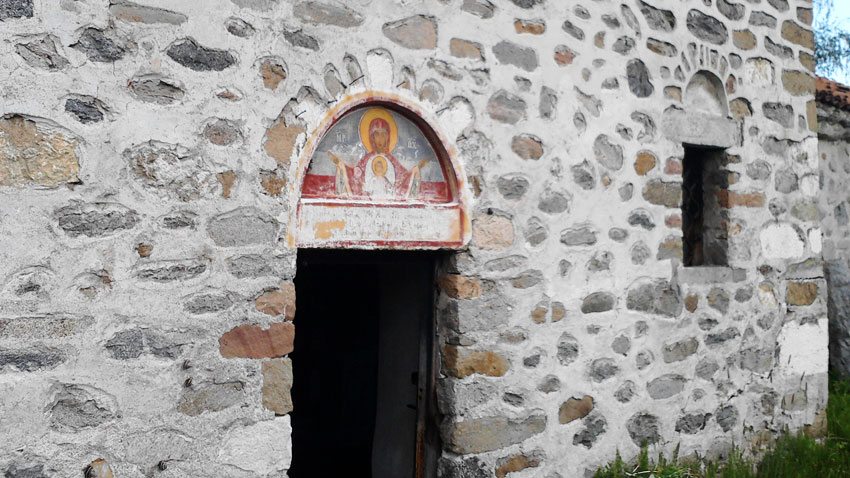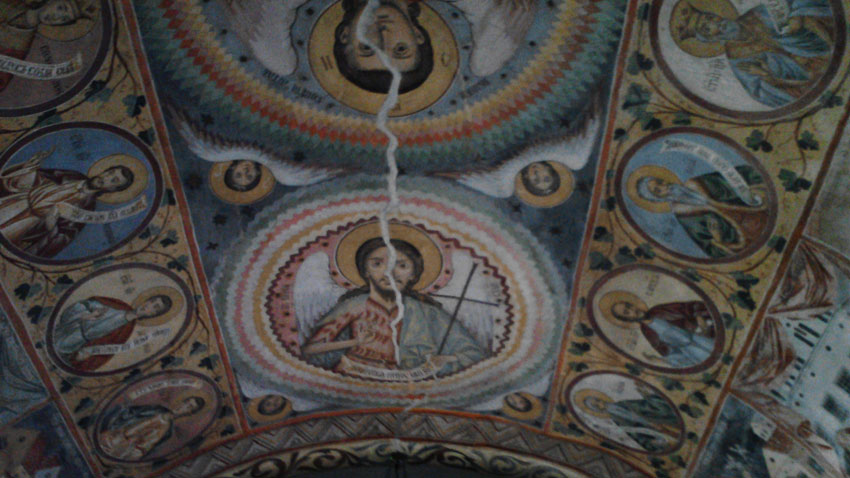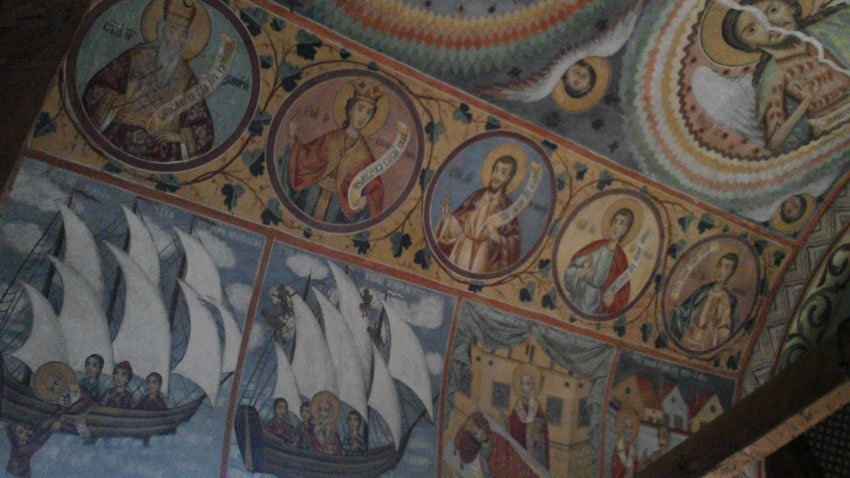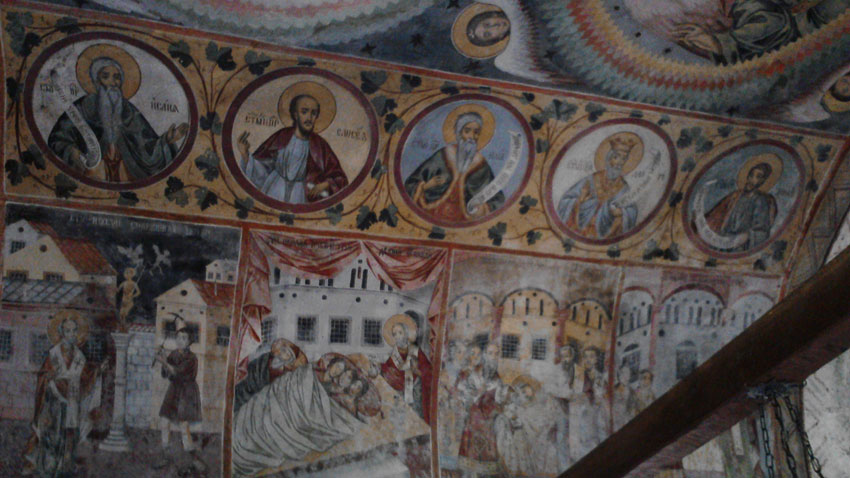The village of Maritsa has nothing special or different about it, compared to the other settlements at the foot of the Rila Mountain – it has clean streets and cozy yards with flowers and trees blossoming. At the same time a monument of culture can be found in the heart of this picturesque place – the St. Nikola /St. Nicholas/ Church. Director of Samokov’s History Museum Veselin Hadjiangelov gives us more details on the landmark, dated back to the Renaissance period and known for its three periods of construction:

“It was built up during the last decades of the 16th c., during the Ottoman period. Its architecture is typical for the late Middle Age – one-nave, single-pass and with walls thick 1 m, built of stone, bonded with mortar. The second period began in 1830, during the rule of Sultan Mahmoud. An inscription above the western entrance testifies on that. The third period was after 1869. The necessity of expanding the temple’s space is prompted by the expansion of the Christian population in the village of Makhala – the old name of Maritsa. The 1961 restoration process opted for keeping the original outlook of the church.”
Veselin Hadjiangelov gives us more details on the murals and iconographers:
 “Art expert Asen Chilingirov is one of the temple’s best researchers, as he wrote a monography on the matter. According to him the early murals were dated end-16th c. and those were made in two stages. Right after the building the inscription was placed on a clay pad. Several fragments from that period have been preserved. The second stage came a few years later. St. George and St. Demetrius were depicted as horsemen on lime plaster, alongside the saints. There are friezes with medallions of Christian saints in the altar space and also a cycle with festive scenes from the bible. Christ Pantocrator, Mother Mary and St. John the Baptist have all been depicted in a marvelous manner under the dome – in a double ring of medallions. A simplified style, close to the early-Christian art of the Comnen epoch can be seen in the late-16th c. murals. Perhaps those researchers were right, saying that the icon-painters came from Mount Athos, most likely from the close circle of St. Pimen Zografski, who had worked in the area of Sofia’s Mount Athos Minor. The western segment of the church hosts murals from the 19th c., depicted by icon-painters from the town of Samokov. Scenes from the life of St. Nicholas can also be seen under the dome.”
“Art expert Asen Chilingirov is one of the temple’s best researchers, as he wrote a monography on the matter. According to him the early murals were dated end-16th c. and those were made in two stages. Right after the building the inscription was placed on a clay pad. Several fragments from that period have been preserved. The second stage came a few years later. St. George and St. Demetrius were depicted as horsemen on lime plaster, alongside the saints. There are friezes with medallions of Christian saints in the altar space and also a cycle with festive scenes from the bible. Christ Pantocrator, Mother Mary and St. John the Baptist have all been depicted in a marvelous manner under the dome – in a double ring of medallions. A simplified style, close to the early-Christian art of the Comnen epoch can be seen in the late-16th c. murals. Perhaps those researchers were right, saying that the icon-painters came from Mount Athos, most likely from the close circle of St. Pimen Zografski, who had worked in the area of Sofia’s Mount Athos Minor. The western segment of the church hosts murals from the 19th c., depicted by icon-painters from the town of Samokov. Scenes from the life of St. Nicholas can also be seen under the dome.”

Mr. Hadjiangelov explains this wealthy church in a small place during the times of Ottoman rule like that:
“The villages along the upper segment of the Maritsa River were known for the ferrous mining across the entire Ottoman period. Hence the greater freedom of the population. The passage to what’s now the Borovetz Resort was guarded by dervendjii – Bulgarian armed militia. That was how the Christian population could build up its own temple and celebrate its religious fests…”
Doesn’t the St. Nikola Church need its contemporary donators, in order to remain for the next generations?
“The preservation and protection of the religious monuments are our duty. The old churches, monasteries and their heritage are part of our culture’s treasury. The church of Maritsa was saved over the 1960s by the newly-created back then Institute for Monuments of Culture,” Veselin Hadjiangelov says and invites everyone to visit the magnificent church of St. Nicholas in the village of Maritsa.

English version: Zhivko Stanchev
Archaeologists have discovered a very rare and valuable glass bottle in a 2nd-century tomb in the southern necropolis of the Roman colony Deultum near the village of Debelt (Southeastern Bulgaria). What makes it unique is that it depicts the myth of..
The Days of Croatian Archaeological Heritage, which will last until 8 November, begin today at the National Archaeological Institute with Museum at the Bulgarian Academy of Sciences (NAIM-BAS) in Sofia. The event is organised by the Croatian Embassy in..
Today, 6 November, marks 104 years since the annexation of the Western Outlands in 1920. Traditionally Bulgarian territories in south-eastern Serbia and northern Macedonia were ceded to the Kingdom of Serbs, Croats and Slovenes in 1920 as a result of..
Archaeologists have discovered a very rare and valuable glass bottle in a 2nd-century tomb in the southern necropolis of the Roman colony Deultum near..

+359 2 9336 661
